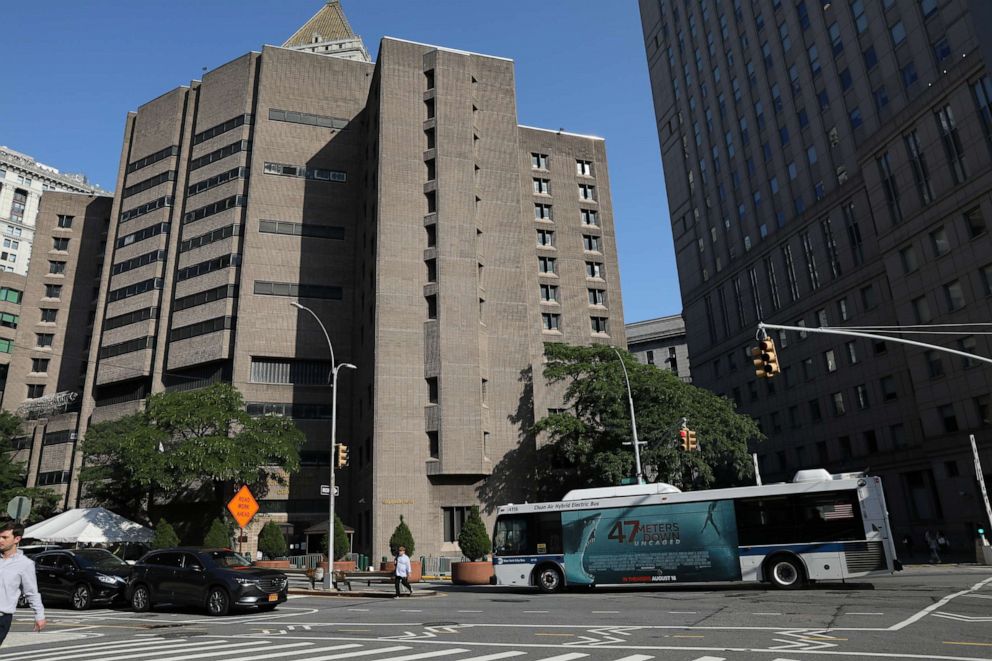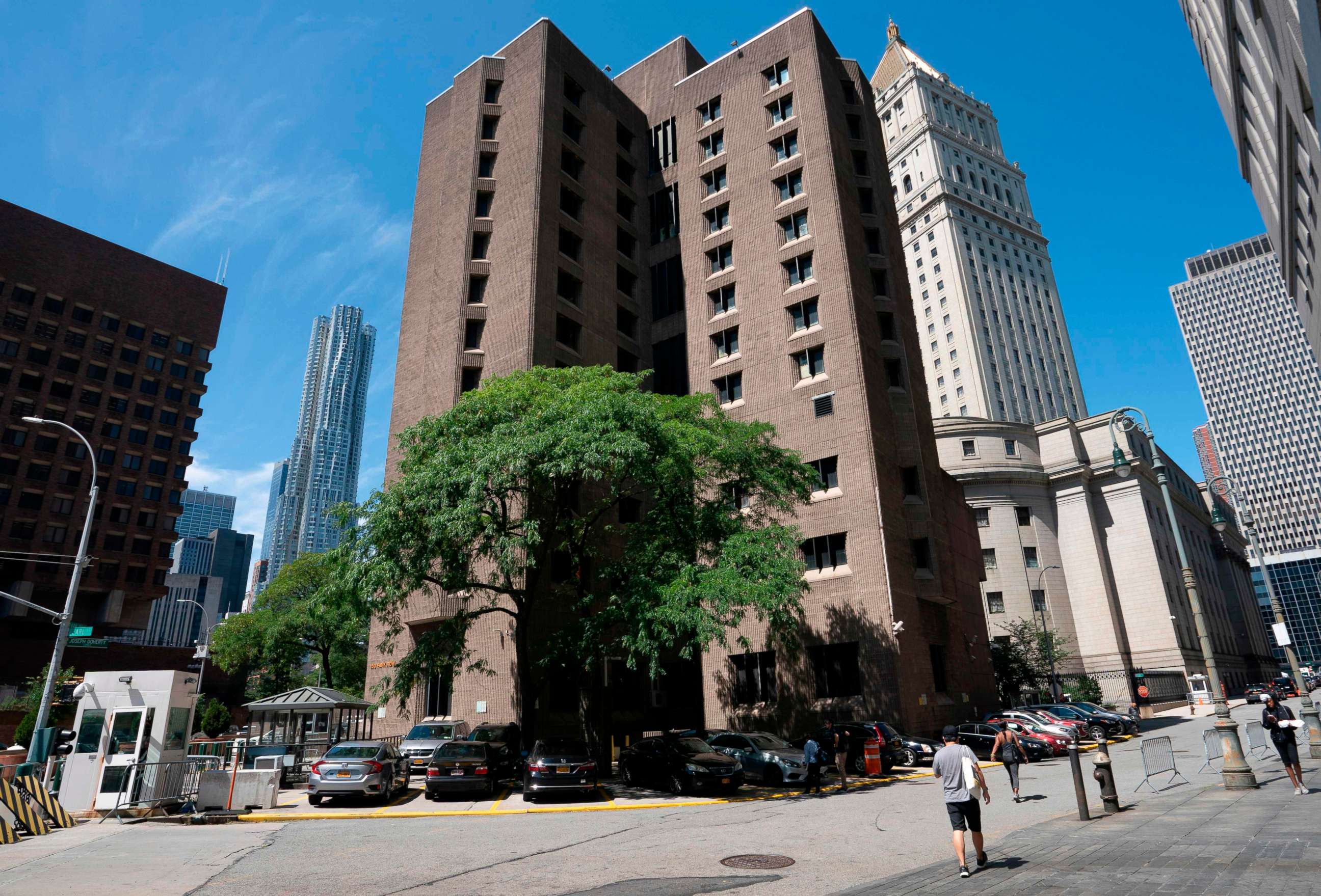What to know about security in the federal prison system amid Epstein death investigation
Epstein's death highlighted possible flaws in the prison infrastructure.
When convicted sex offender and financier Jeffrey Epstein was found dead in his prison cell at the Metropolitan Correction Center in New York City Saturday, questions over how this could have been allowed to happen began immediately.
Epstein was found Saturday morning in his cell at the chronically short-staffed Manhattan jail, which is staffed by officers from the federal Bureau of Prisons (BOP). Epstein had been in a unit known for holding notorious prisoners under extremely tight security.
Until recently, Epstein had been on suicide watch at the facility after a failed suicide attempt. That high threat watch, which had recently been terminated by the BOP, led Attorney General William Barr to state “there were serious irregularities" at the federal jail where Epstein took his own life as he awaited trial on charges that he sexually abused underage girls.
But Epstein's death immediately brought into question the basic infrastructure of the prison system and highlighted potential flaws in its foundation.
The BOP is responsible for running the ever-growing federal prison system, which holds prisoners detained for crimes ranging from international terrorism and bank robbery to money laundering and drug smuggling.
To be incarcerated at a BOP facility an individual must have committed some type of federal crime and be convicted to a federal prison sentence. That intake process begins with the U.S. Courts Probation and Pretrial Services preparing and rating an incoming prisoner in a sentencing report that considers a series of factors, including type of crime or prior criminal history.

That report is often used by the federal courts to determine the sentencing guidelines of a particular prisoner. Once sentenced, that report get transferred to the BOP which uses that -- along with its own reporting system -- to create a risk assessment of a prisoner.
Ultimately, the BOP then uses those reports to determine the security risk and location where a new federal prisoner will serve their federal prison time.
Prisoners are classified by the BOP in a database system called SENTRY, which produces a security score based on individual characteristics entered. This score determines the minimum-security level permitted, at which point an appropriate facility is subsequently identified -- typically within a 500-mile radius.
But if an inmate is placed at an institution that is more than 500 miles from his or her release residence it is generally due to specific security, programming or population concerns. The same criteria also applies when making decisions for both initial designation and redesignation for transfer to a new facility.
Inmates are designated or redesignated to institutions based on:
-the level of security and staff supervision the inmate requires,-the level of security and staff supervision the institution provides,-the medical classification care level of the inmate and the care level of the institution,-the inmate's program needs (e.g., substance abuse treatment, educational/vocational training, individual and/or group counseling, medical/mental health treatment), andvarious administrative factors (e.g., institution bed space capacity, the inmate's release residence, judicial recommendations, separation needs and security measures needed to ensure protection of victims, witnesses, and the general public).
There are currently a total of 177,234 inmates in 122 BOP-run or contracted facilities and about 35,000 employees who run and monitor this vast prison system across 43 states.

Furthermore, the Federal Bureau of Prisons facilities break down into five security levels:
Federal Prison Camps (FPCs), the BOP minimum-security facilities, feature a lack of or a limited amount of perimeter fencing, and a relatively low staff-to-inmate ratio.
The next step up are the low-security Federal Correctional Institutions (FCIs) which have double-fenced perimeters with inmates living mostly in cubicle or dormitory housing.
Medium-security FCIs and some United States Penitentiaries (USPs) are classified to hold medium-security inmates. The medium facilities have strengthened perimeters, which often consist of double fences with electronic detection systems. Medium-security facilities mostly have cell housing.
But most U.S. penitentiaries are classified as high-security facilities with the perimeters highly secured and reinforced fences or walls.
Unlike many state prison systems, however, the federal prison system is typically more restrictive and has a heightened level of control and monitoring of federal prisoners. The federal prison system is set up to house convicted federal criminals with some facilities, like the Metropolitan Correction Center, being used mostly to process newly arrested or convicted individuals, hold those awaiting a hearing or trial, or house convicted prisoners serving relatively short sentences.

If a prisoner has a fear, threat, discipline or health issue the prisoner can request, or BOP can opt to place them in, a Special Housing Unit (SHU), which is where Epstein was located within the MCC.
Since the federal BOP maintains custody of federal prisoners, it also runs all of the rehabilitation programming that a federal prisoner is expected to participate in and learn from. That program is typically based on a “Good Time Credit” system where prisoners get good time credit for behavior, working, rehabilitating and showing that they have generally learned their lesson and getting ready to reenter society.
Since there is no federal parole, a prisoner must serve at least 85% of their sentence and only then can they begin the release process to hopefully reintegrate and become a productive member of society.
Donald J. Mihalek is an ABC News contributor, retired senior Secret Service agent and regional field training instructor who also serves as the executive vice president of the Federal Law Enforcement Officers Association Foundation.




